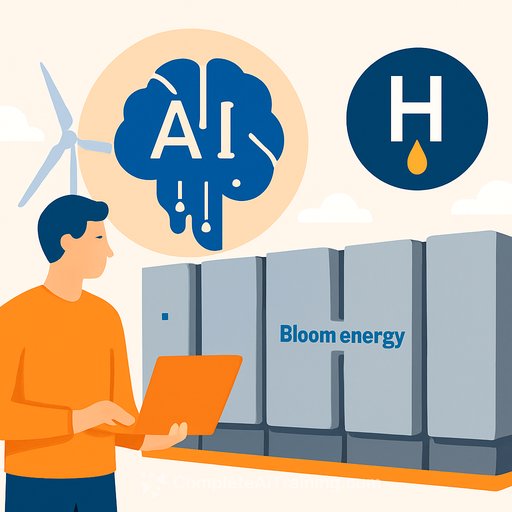Bloom Energy’s Strategic Shift into AI and Hydrogen Reinforces Fuel Cell Leadership
Bloom Energy is demonstrating strong momentum with its clean power technologies, maintaining a 2025 revenue target between $1.65 and $1.85 billion. The company reported $326 million in Q1 and $401.2 million in Q2, signaling growing demand for its fuel cell solutions.
Powering the Digital World: Fuel Cells and Data Centers
A key development this year is Bloom’s move into AI-driven energy optimization through a strategic partnership with Oracle. Data centers face increasing pressure to secure reliable, fast, and resilient energy, especially in regions like California where energy supply is constrained. Bloom’s solid oxide fuel cells (SOFCs) meet these demands by providing modular, low-emission Energy Servers that operate independently from the grid—crucial for ensuring uninterrupted uptime.
Integrating AI allows Bloom to enhance performance and efficiency further, making its solutions ideal for high-demand technology environments.
Inside the Technology
- SOFC Technology: Converts fuels such as natural gas, biogas, or hydrogen into clean electricity using high-temperature ceramic materials. Known for high efficiency, minimal emissions, and grid independence.
- Electrolyzers: Utilize the same solid oxide technology to split water into green hydrogen using renewable energy, positioning Bloom within the expanding hydrogen production sector.
- AI Integration: Provides real-time optimization of energy use and distribution, crucial for maintaining uptime and controlling costs.
What’s Driving Growth
Bloom Energy’s Q2 revenue increased by 19.5% year-over-year, with improving margins. The partnership with Oracle opens doors to the enterprise IT market, focusing on high-margin opportunities. At the same time, the company is scaling back on older, capital-heavy projects. Its electrolyzer program is advancing Bloom’s presence in the green hydrogen market, which continues to grow rapidly.
Why This Matters
Bloom’s growth reflects a shift in clean energy adoption. Traditional fossil fuel power providers face increasing competition as investors favor companies delivering proven, scalable clean technologies. While some financial concerns remain—such as insider stock sales and a moderate Altman Z-score—Bloom’s expanding deal pipeline and improving cash flow suggest it is gaining lasting traction.
The Bigger Picture
Bloom’s efforts extend beyond financial results. By combining AI, versatile fuel options, and green hydrogen production, the company is helping to meet the dual challenges of decarbonization and the growing energy needs of digital infrastructure.
Executives interested in AI-driven operational improvements and sustainable energy strategies may find it valuable to explore Bloom’s approach. For those looking to deepen their understanding of AI applications in energy and other sectors, resources like Complete AI Training’s latest AI courses offer practical insights.
Your membership also unlocks:






